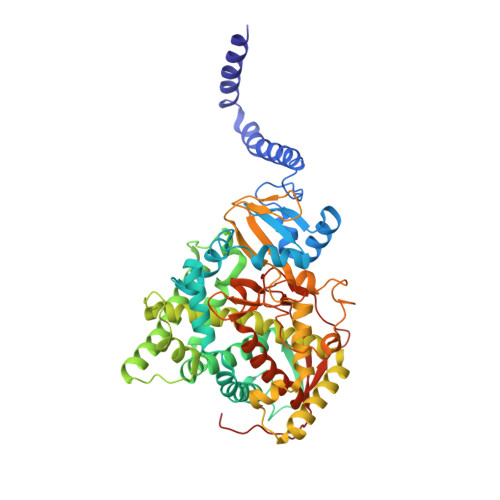Triazole resistance mediated by mutations of a conserved active site tyrosine in fungal lanosterol 14 alpha-demethylase.
Sagatova, A.A., Keniya, M.V., Wilson, R.K., Sabherwal, M., Tyndall, J.D., Monk, B.C.(2016) Sci Rep 6: 26213-26213
- PubMed: 27188873
- DOI: https://doi.org/10.1038/srep26213
- Primary Citation of Related Structures:
4ZDY, 4ZDZ, 4ZE0, 4ZE1, 4ZE2, 4ZE3, 5HS1 - PubMed Abstract:
Emergence of fungal strains showing resistance to triazole drugs can make treatment of fungal disease problematic. Triazole resistance can arise due to single mutations in the drug target lanosterol 14α-demethylase (Erg11p/CYP51). We have determined how commonly occurring single site mutations in pathogenic fungi affect triazole binding using Saccharomyces cerevisiae Erg11p (ScErg11p) as a target surrogate. The mutations Y140F/H were introduced into full-length hexahistidine-tagged ScErg11p. Phenotypes and high-resolution X-ray crystal structures were determined for the mutant enzymes complexed with short-tailed (fluconazole and voriconazole) or long-tailed (itraconazole and posaconazole) triazoles and wild type enzyme complexed with voriconazole. The mutations disrupted a water-mediated hydrogen bond network involved in binding of short-tailed triazoles, which contain a tertiary hydroxyl not present in long-tailed triazoles. This appears to be the mechanism by which resistance to these short chain azoles occurs. Understanding how these mutations affect drug affinity will aid the design of azoles that overcome resistance.
- Sir John Walsh Research Institute, University of Otago, Dunedin, New Zealand.
Organizational Affiliation:


















